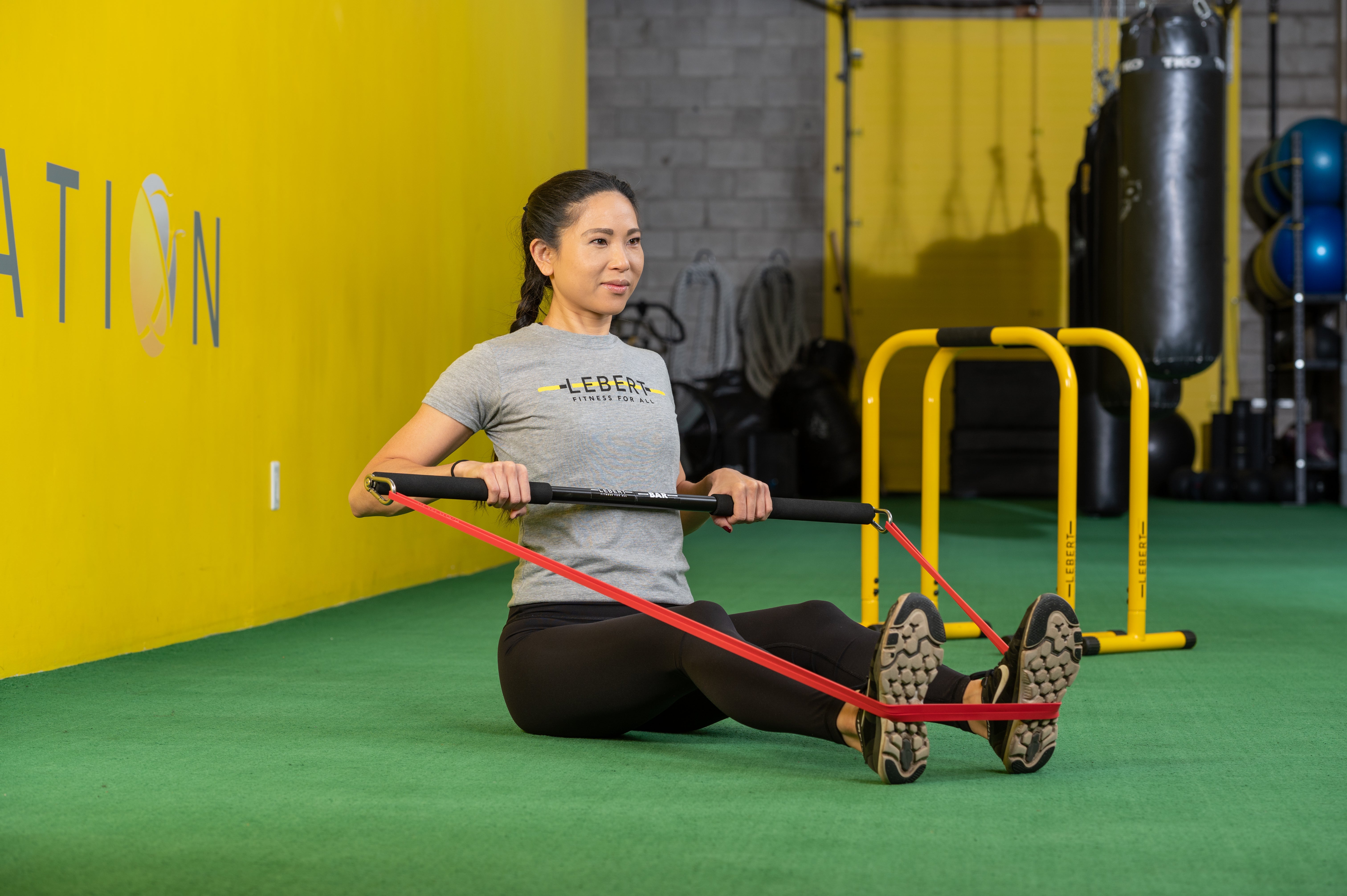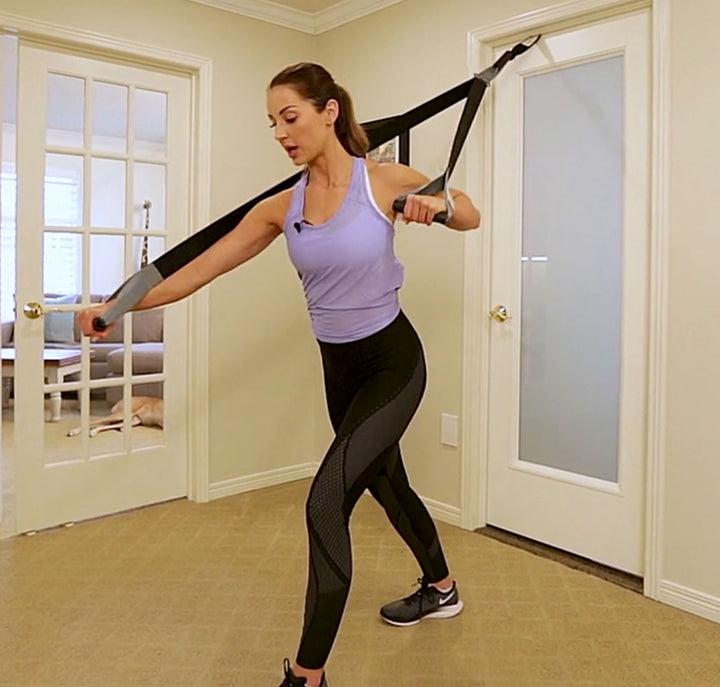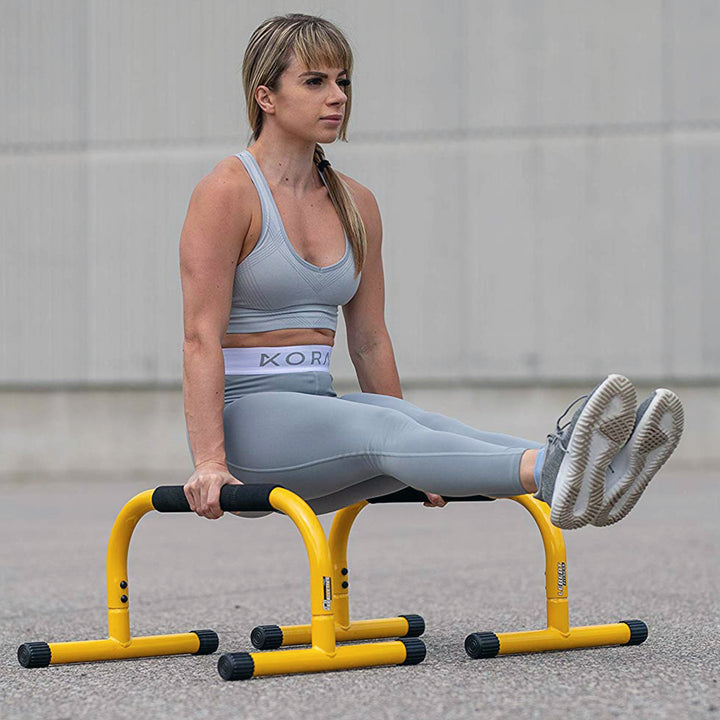Building your own home gym is no longer just a luxury. In our current environment, having access to a private training space can be thought of as almost essential. In the fast-paced world we live in, finding time to hit the gym or attend fitness classes can be a challenge. With hectic schedules and numerous commitments, maintaining a healthy lifestyle often takes a backseat.
Some individuals are deterred from the gym environment due to feelings of self-consciousness or discomfort. Exercising at home eliminates these concerns, providing a private and comfortable space to focus on your fitness goals without judgment. This is especially beneficial for those who are just starting their fitness journey or recovering from an injury.
Top 4 Reasons You Need a Home Gym
-
Convenience and Accessibility:
One of the primary advantages of having exercise equipment at home is the unparalleled convenience it offers.
With no more than a quick commute to your basement or garage, your workout is always just a few steps away.
This accessibility encourages regular exercise, as it eliminates the common barriers associated with
traditional gym attendance.
-
Consistency is Key:
Consistency is crucial for any fitness journey. Having exercise equipment at home makes it easier to stick to
a routine. Whether you prefer morning workouts to kickstart your day or late-night sessions to de-stress,
the flexibility of home exercise allows you to maintain a consistent schedule. Consistency leads to better
results and a more sustainable, long-term commitment to fitness.
-
Cost-Effective:
As with most things, you can spend as much money as you want, but with Enhanced Bodyweight training,
even the initial investment in equipment is relatively modest. With the hundreds of exercises that are
unlocked, this is the most cost-effective way to get started. Over time, the cumulative cost of gym
memberships, commuting expenses, and potentially expensive fitness classes can surpass the upfront cost of
setting up a home gym. Plus, home exercise equipment is a one-time purchase that pays off with each use.
-
Family Fitness:
Having exercise equipment at home promotes a culture of fitness within the family. Parents can set an example
for their children by demonstrating the importance of regular exercise. Family members can take turns using
the equipment, making fitness a shared activity that fosters a healthy and active lifestyle for everyone.
A Minimalist Home Gym Can be Just the Ticket
Do you really need an expensive cardio machine and a cross-training weight rig? Quite simply, no. You don’t need anything too expensive or complex, and frankly the more moving parts and adjustments on a piece of equipment, the more things that can go wrong and break.
In reality, the only real thing you need for adequate training is a stable floor or ground area. If you travel frequently or don’t have access to equipment of any type, you can still get in a solid bodyweight training session with no equipment at all.
But if you want to put together a really awesome home gym, there are some things you’ll want to invest in. These items won’t break the bank, will add more options and will extend your training so you can target areas like the upper back and biceps that are normally difficult to train without equipment.
We refer to this type of fitness equipment as Enhanced Bodyweight training toolsand with the right ones you can have nearly limitless exercise options!
Rules to Build a Great Minimalist Home Gym
-
Consider Your Available Space and Budget (how much room do you really have) and your environment. Allow enough room for you to move around freely. In addition to space, your budget may determine the number of fitness tools that you are able purchase. If that’s your situation, then review your fitness goals
and prioritize which tools to buy first.
-
Consider Your Level of Fitness and Goals. Are you brand new and need equipment to help with the basics or looking to add a new level or challenge? Are you interested in learning
more advanced calisthenics skills or trying to improve your athletic ability?
-
Shop for Best Quality You Can Afford. The world is loaded with cheap knock-off items that sell on price alone. They are often poorly designed, not tested and can actually lead to injury. However, it can be difficult to figure out what product is the best as pictures can be enhanced and misleading. So read the reviews
and do a bit of research on the company itself. Are they fitness professionals or just a copycat manufacturer? Are they committed to helping you meet your fitness goals or just trying to sell you products and wont be around beyond the sale?
-
Look for a Company That Supports its Customers. High quality companies provide resources in terms of free workouts, videos and online support that can be very valuable along the way. The best ones can be looked at almost as an online coach, there to provide you with knowledge and inspiration along the way. For example, at Lebert Fitness we provide a free mobile exercise app with tons of workouts and exercise tutorials, a private Facebook group for members to engage with others as well as free monthly training sessions to learn from Lebert Master trainers.
Here are some of our top equipment suggestions:
Portable Exercise Bars/Lebert EQualizer:
Horizontal pulling is a movement pattern that should be regularly trained regardless of your ability level. Having a horizontal rowing bar at waist or slightly lower height will allow you to work on these skills, and the Lebert EQualizers fit the bill perfectly due to their strength, stability and portability.

An inverted row performed on EQualizers is a compound pulling movement that targets the upper back, the rear shoulders and to some extent, the biceps. Keeping those muscles engaged during the movement is important, as is keeping the lower back and glutes tight. Don’t allow your body to sag.
Beginners in particular will find a set of EQualizer bars helpful, especially if a scaled pullup is out of the question. Building horizontal pulling strength is somewhat easier than vertical pulling, and the movement skill will have some transferability to the more difficult overhead pullup. Once the basics have been trained, you can progress rowing movements by keeping the legs straight and focusing on keeping the shoulder in retraction and leading with the sternum during the pull.
The EQualizer are at the top of our list because of their versatility. While they are perfectly suited for horizontal rowing, they also make great dip stands, push-up bars, a platform for knee and leg raises, and a base for almost a hundred other calisthenics exercises.
Stand Alone Weights or Resistance Equipment
While bodyweight training is particularly effective, having external resistance to work with develops strength in a different way. There are a few options that fit the bill due to their versatility, portability, and effectiveness. Here are three options we use with clients all the time:
-
Kettlebells are a great option when weight training because of their versatility, their portability, and
their effectiveness for both ballistic and strict strength movements in multiple planes.
- Pick a pair or two of weights that suit your ability: a pair of 8 kilogram, 12 kilogram, 16 kilogram or
24 kilogram bells. You can do a lot with a single bell, but having a pair of equal weights will allow you
to perform more advanced double kettlebell moves.
While kettlebells can vey very effectve, you do have to know how to use them properly. They are technically
more
advanced than dumbbells due to the increased complexity of movement involved, and it’s difficult to learn
without being shown how by a qualified trainer. For that reason, dumbbells may be a better choice for many.
- When choosing dumbbells, you can choose from an adjustable set or a few pairs of fixed weight bells.
If you are going the adjustable route, get the best you can afford. You don’t want to skimp on quality here.
Try them before purchasing. If you’re used to fixed weights, you may find that the extra bulk of an
adjustable set may make them awkward for some moves.
Unless space is really a priority, fixed-weight dumbbells may be your best bet. Fewer moving parts and
adjustments means they will last a lifetime, and their stability and durability can’t be beat. Rubber-coated
hexagon dumbbbells are our preference (they won’t roll around on the floor or damage surfaces) and you don’t
really need a full selection of weights to make them useful. You’ll need a few pairs suitable for arm and
overhead work (presses, push presses, snatches, etc.) and some heavier varieties for squats, deadlifts, and
other lower body work. Three to five pairs generally will do the trick.
- The Lebert Resistance Bar is a relatively new addition to the product line-up and a great
one. It is a very pragmatic tool that uses resistance bands to mimic all the movements of a traditional
barbell.
The Resistance Bar was designed to help you build strength and burn fat by performing full body or
isolation exercises easily and efficiently. It easily disassembles into two pieces so you can store it
or take it with you anywhere, is made to last and is compatible with any resistance bands.

Suspension & Resistance Trainer/Lebert HIIT System:
While there are quite a few traditional suspension trainers on the market, the Lebert HIIT System has several advantages over them. It’s not just a suspension device, it’s a true multifunctional trainer that incorporates dynamic unilateral, rotational, and bilateral strength-building movements. By leveraging your own bodyweight for dynamic resistance, you can regress or progress exercises easily.
Unlike old-school suspension trainers, the HIIT System has a friction ring that allows one side of the body to resist the other in all planes of motion. From rows to presses to curls and lunges, you can train your whole body. Unlike suspension trainers that can only be anchored overhead, the HIIT System can be attached at any height allowing multi-planar training.
The HIIT System also comes with a third handle, so when it isn’t anchored to a door or a bar, you can use it with a partner for buddy-style workouts. This innovative product is a newer release from Lebert Fitness, and you owe it to yourself to check it out.

Parallettes:
Why train with parallettes? More than just “push up bars”, Lebert Fitness Parallettes are a compact but essential piece of equipment for bodyweight training that will greatly improve your upper body and core strength. It’s all about the height of the bars -- they’re just high enough so that you can support yourself with straight arms and swing through them, but low enough to be challenging.
The elevation of the bars also allows for a larger range of motion in pushing movements. If you perform a push up from the floor, you can only go as far as the ground will allow you. Performing the same movement on parallettes will enable you to go even deeper.
Parallettes may not be the first thing people think of when they think of a home gym, but they can take you from beginning movements right into some pretty advanced calisthenics.
You’ll also find them easy on the wrists.
Use them for everything from L-sit static holds to deep pike push ups. Pike push ups are performed in a downward-dog position, with the legs straight and the hips flexed. Parallettes not only help with wrist strain, but they also allow you to increase the range of motion at the bottom.
Ensure the parallettes are on a grippy surface where they won’t move. There are also some pretty good guides to training with the parallettes like Bar Strong that is available at the Lebert Fitness website.

Floor Mat
If you don’t have the budget for commercial-grade foam or rubber flooring in your home gym, you’ll at least want a mat. A thick, grippy floor mat can come in handy for training floor mobility and yoga moves. While a simple yoga mat may do, you might want to invest in a larger roll-up mat designed for martial arts training. These have a nonslip, antimicrobial vinyl surface that's permanently bonded to a dense foam. They are easy to set up, transport and store, making them ideal for at home use.
Finally, consider a few accessory pieces to complete your setup.
Foam Roller:
Foam rolling has become popular over the past ten or so years and is an inexpensive way to get some self myofascial release (SMR). They work by applying pressure to a muscle group by moving the roller under your own bodyweight. They help to get blood into the muscles, loosen up trigger points and increase mobility.
Consider a standard size or a compact roller if you want something portable. Foam rollers come in various levels of firmness; the greater the density and firmness of the roller, the more intense the therapy will be. Beginners may want something more forgiving, while more experienced trainees will likely want something denser.
Some rollers are textured, others have a smooth surface. The one that will be right for you will be ultimately dependent on your ability to handle discomfort and even pain. When you hit a trigger point, it can hurt, but you will adapt over time.
Resistance Bands:
Bands are inexpensive, useful and ultimately portable. You can use them as an alternative to weights, to work on mobility and rehab, and as an assistance tool for pullups.
Thickness, colours and resistance levels tend to vary by company. Nevertheless, the thicker the band, the greater the resistance will be. Stronger bands will help to assist with pullups but will make strength exercises more difficult (bands can provide both assistance and resistance).
Varieties of bands include the looped standard bands (thicker with various levels of resistance), therapy bands (thin, non-looped), and tubular bands with handles. Looped bands are the most versatile as they can be used to scale pullups and the lighter resistance varieties can be used for rehab and mobility work.
Stretch Straps:
A great addition to your fitness toolbox is a pair of stretch straps. Being able to stretch is of vital importance to keeping your body supple and injury-free, but many of us don’t have the range to reach an appropriate position. Stretch straps allow you to comfortably reach different positions and can also help hold them longer.
A pair of stretch straps are affordable and don’t take up any space. Consider a set for your home gym or to throw in a gym bag.
What you end up with will vary with your own personal preferences and style of training, but this list should help you get started. Finally, don’t forget to add a decent portable stereo for those workout jams!

Conclusion: Home Gym Equipment is an Essential Investment
Incorporating exercise equipment into your home is a transformative investment in your health and well-being. It provides the flexibility, consistency, and comfort needed to make fitness a sustainable part of your lifestyle. As we navigate the demands of our daily lives, having the tools for a fulfilling workout just steps away ensures that our health remains a top priority. Consider making the leap to bring exercise equipment into your home and embark on a journey to a healthier, happier you.






